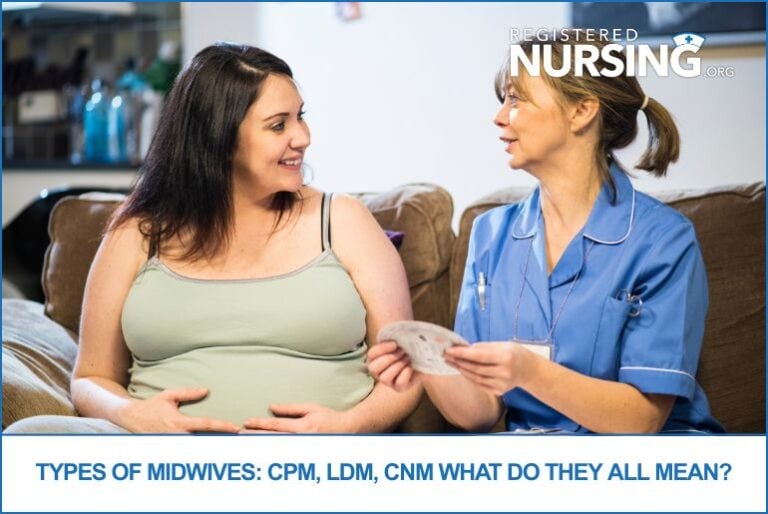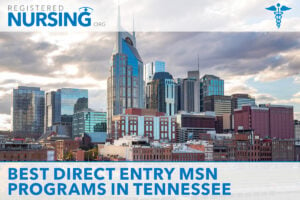Types of Midwives: CPM, LDM, CNM – What Do They All Mean?

As the demand for personalized, holistic maternity care continues to rise in the U.S., according to recent data from the Centers for Disease Control and Prevention (CDC), more families are turning to midwives for prenatal care, labor and delivery support, and postpartum guidance. At the same time, many nurses and healthcare professionals are exploring midwifery as a meaningful and impactful career path.
But not all midwives are the same. From Certified Nurse-Midwives (CNMs) to Certified Professional Midwives (CPMs) and Licensed Direct-Entry Midwives (LDMs), there are distinct differences in training, certification, and scope of practice.
If you’re a nurse planning to move into midwifery, understanding what each title means can help you identify the right educational and clinical path. You can also explore options such as RN-to-MSN programs that support this transition into advanced practice roles.
In the following sections, this guide will break down the key types of midwives recognized in the U.S., explaining their roles, credentials, and where they typically work so that nursing professionals can better understand which path may align with their background and career goals.
Certified Nurse-Midwife (CNM)
Certified Nurse-Midwives are registered nurses (RNs) who have completed graduate-level midwifery education and passed a national certification exam. CNMs are licensed in all 50 states and are considered advanced practice registered nurses (APRNs).
They are trained to provide comprehensive care during pregnancy, childbirth, and the postpartum period, and can also offer gynecologic and primary care services throughout the lifespan.
Key Facts About CNMs:
- Must be a licensed RN with a master's or doctoral degree in nurse-midwifery
- Certified by the American Midwifery Certification Board (AMCB)
- Work in hospitals, birth centers, clinics, and sometimes at home births
- Can prescribe medications and order diagnostic tests
Because of their nursing background, CNMs often work in collaborative relationships with OB-GYNs and have access to hospital-based care. Their practice is recognized and reimbursed by Medicaid and private insurers in all states.
For those considering this career path, becoming a CNM involves obtaining an RN license, pursuing graduate-level training, and passing the national certification exam administered by the AMCB. You can learn more by visiting the Nurse-Midwife career guide.
Certified Professional Midwife (CPM)
A Certified Professional Midwife is a midwifery professional who is not required to be a registered nurse. Instead, CPMs are trained specifically in out-of-hospital birth through accredited midwifery programs or structured apprenticeships.
They are certified through the North American Registry of Midwives (NARM) and are experts in low-risk, community-based maternity care.
Key Facts About CPMs:
- Do not need an RN or nursing degree
- Certified by NARM following education and clinical experience
- Typically attend home births or work in freestanding birth centers
- May not be licensed or legally recognized in every U.S. state
Because CPMs focus on natural birth outside hospital systems, they are a popular choice for families seeking low-intervention care. However, their ability to practice legally and bill for services depends on individual state laws.
Licensed Direct-Entry Midwife (LDM)
Licensed Direct-Entry Midwives are trained midwives who enter the profession without first becoming registered nurses. The term “LDM” is most commonly used in states like Oregon, where the title is a legal designation for midwives who are licensed by the state.
LDMs often hold CPM credentials but not always; it depends on the requirements of the state's regulatory body. Their training may include coursework from MEAC-accredited schools or apprenticeship-based programs.
Key Facts About LDMs:
- Do not hold RN licensure
- Licensing requirements vary by state and may include CPM certification
- Serve clients in home birth settings or birth centers
- State-specific licensure; not recognized nationally
Families who prefer home birth may seek out LDMs for their community-centered approach, but it's important to confirm that the midwife is licensed and authorized to practice in your state.
Many LDMs are educated through programs accredited by the Midwifery Education Accreditation Council, which sets national standards for midwifery education. You can learn more about these accredited pathways through the Midwifery Education Accreditation Council (MEAC).
Midwife Types at a Glance
To help simplify the distinctions, here's a quick comparison:
| Type | Requires RN? | National Certification? | Typical Setting | Legal in All States? |
| CNM | Yes | Yes (AMCB) | Hospitals, clinics, homes | Yes |
| CPM | No | Yes (NARM) | Homes, birth centers | No (varies by state) |
| LDM | No | Sometimes (CPM or state-based) | Homes only | No (state-specific) |
Which Midwifery Path Is Right for You?
Whether you’re considering becoming a midwife or planning your maternity care, it's important to choose the path that aligns with your values, goals, and local regulations.
For Aspiring Midwives:
If you are already an RN or want to provide care in hospitals and have prescriptive authority, becoming a CNM may be the best fit. This path offers the most clinical flexibility and recognition across all states. You can explore online MSN programs to see what graduate options are available.
If you’re more interested in home birth, community care, and a non-nursing route, consider training to become a CPM or LDM. These roles offer personalized care for low-risk pregnancies and can be deeply rewarding, especially for those passionate about holistic birth support.
For Aspiring Nurses:
If you’re a nurse or nursing student exploring midwifery as your next career move, understanding the differences between CNM, CPM, and LDM pathways is essential. Choosing the right certification and training model depends on where you want to work, whether you want prescriptive authority, and the level of autonomy you’re seeking.
Make sure to review your state's midwifery regulations carefully, as the ability to practice legally and independently varies, particularly for CPMs and LDMs. If you’re pursuing a midwifery career as a nurse, focus on understanding the licensure requirements and training pathways that align with your nursing background, whether through a bridge program for CNMs or direct-entry options tailored to non-RNs.
Final Thoughts
Midwifery offers a diverse and deeply rewarding path for those drawn to patient-centered, holistic care, whether you’re providing it or receiving it. From hospital-based certified nurse-midwives to community-rooted licensed midwives, every role plays a vital part in expanding safe, supportive birth options in the U.S.
No matter which midwifery path you choose, ongoing education, certification, and compassion are at the heart of this work. As interest in natural and personalized maternity care continues to grow, midwives are helping shape the future of reproductive health, one birth at a time.
Sources
- American College of Nurse-Midwives (ACNM)
- North American Registry of Midwives (NARM)
- Midwifery Education Accreditation Council (MEAC)
- U.S. Bureau of Labor Statistics – Nurse-Midwives
Latest Articles & Guides
One of the keys to success as a registered nurse is embracing lifelong learning. Our articles and guides address hot topics and current events in nursing, from education to career mobility and beyond. No matter where you are on your nursing journey, there’s an article to help you build your knowledge base.
Browse our latest articles, curated specifically for modern nurses.



